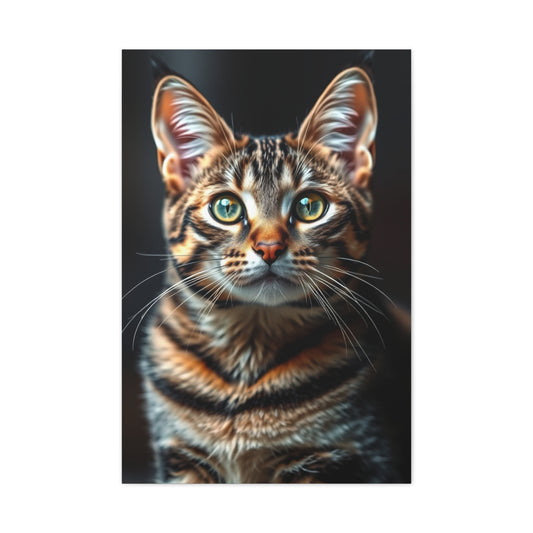The Crimson Legacy: From Madder Roots to Synthetic Revolution
Alizarin Crimson’s story is as richly layered as the pigment itself, a deep, evocative red that has captivated artists for centuries. Before this celebrated hue took its place on the modern palette, its journey began in the earth, in the unassuming roots of the madder plant. For millennia, civilizations extracted a vibrant red dye from these roots, eventually learning to transform it into a more stable form through a process called lake pigment synthesis. By combining the dye with a mordant, such as alum, artisans created Madder Lake, an insoluble pigment used extensively in classical painting.
Madder Lake brought a luminous, translucent quality to Renaissance masterpieces. It's warm, glowing reds, used in glazes and subtle veils, enhanced fabrics and flesh tones with ethereal brilliance. Despite its beauty, however, Madder Lake had a critical flaw: it was fugitive. Over time, especially in delicate washes and thin applications, the color would fade when exposed to light, losing its intensity and altering the original appearance of artworks.
Still, the pigment maintained a stronghold in studios across Europe due to its unique chromatic qualities. When the 19th century dawned, so did a new era of chemical innovation. The natural dye compound in madder, known as alizarin, was successfully synthesized in 1868 by German chemists Carl Graebe and Carl Liebermann. This breakthrough marked the birth of Alizarin Crimson, a synthetic pigment now designated as PR83. It retained the deep, bluish-red qualities of Madder Lake while offering improvements in consistency and affordability.
Though hailed as a scientific triumph, Alizarin Crimson was not without its limitations. The pigment continued to struggle with permanence, particularly in water-based media where its transparency and vulnerability to ultraviolet exposure became pronounced. Yet, many artists were willing to accept this trade-off, captivated by the pigment’s singular beauty and expressive depth.
The Chromatic Soul of Alizarin Crimson: Mixing, Glazing, and Magic on the Palette
To truly understand why Alizarin Crimson has remained a staple in artistic practice, one must explore its behavior in mixtures and application techniques. It is a pigment that transforms when placed alongside others, revealing a kaleidoscope of tones and moods depending on its partners on the palette.
In its mass tone, Alizarin Crimson is dark and intense, a shadowy red with a cool blue bias. When thinned or glazed, it becomes transparent, revealing glowing undertones that add depth to any composition. This chameleon-like nature is part of its enduring charm. When blended with Ultramarine Blue, it creates sumptuous purples and maroons that recall twilight skies and regal fabrics. This duo is a favorite in portraiture and atmospheric painting, where subtle gradations and emotional resonance are essential.
The interaction of Alizarin Crimson with yellows is equally compelling. When paired with cadmium yellow deep or even modern alternatives, it creates a vibrant orange one that varies in opacity depending on the transparency of the yellow used. With more translucent yellows, such as cadmium yellow light or modern azo equivalents, the resulting mixture maintains a certain radiance and inner glow. These qualities make Alizarin Crimson ideal for glazing techniques, where light refracts through successive layers of color and returns to the viewer with luminous complexity.
Perhaps one of the more intriguing and lesser-known combinations is its interplay with Viridian, a cool green pigment. The two are chromatic complements and when mixed, neutralize each other to create an earthy, near-black tone. Unlike the flat, often lifeless blacks that come from the tube, this custom-mixed black retains vibrancy and subtle variation, capturing the essence of natural shadow and form. This practice of mixing complementary hues to achieve nuanced neutrals is a respected technique among colorists who aim for realism and visual harmony.
What sets Alizarin Crimson apart is not just the variety of hues it can create, but the quality of those hues. They are not garish or artificial, but instead possess a softness and sophistication that few pigments can match. Even in complex mixtures, the pigment allows underlying tones to shine through, producing effects that feel organic and emotionally resonant.
Its versatility also extends to its use in different media. While watercolorists must exercise caution due to its lightfastness issues, oil painters often find that the pigment’s behavior in oil is far more dependable. The binding power of oil medium offers some protection, and when further safeguarded with UV-filtering varnishes or placed behind museum-grade glass, artworks can endure decades without significant color loss. This added stability in oil makes Alizarin Crimson a favorite for classical techniques such as indirect painting, grisaille underpainting, followed by translucent color layers, and portrait glazes.
Beauty Versus Permanence: The Modern Debate Around PR83
Despite all its virtues, Alizarin Crimson, specifically the synthetic pigment PR83, has been a subject of enduring controversy. The central issue remains its lightfastness. Scientific studies and empirical artist reports consistently show that the pigment fades over time when exposed to strong light, particularly in dilute washes and water-based applications. This concern is especially pressing for watercolorists, whose medium relies heavily on transparency and whose works are typically displayed without the protective layering available to oil paintings.
Experts like Bruce MacEvoy, a leading authority in color science and watercolour, have cautioned against its use, going so far as to use Alizarin Crimson as a control variable in lightfastness tests due to its predictable deterioration. These findings underscore the importance of knowing the materials one works with, especially for artists who value the archival longevity of their creations.
In response to these challenges, pigment manufacturers and chemists have developed a host of alternatives that attempt to replicate the beloved hue while improving permanence. One such contender is PR149, known as Perylene Maroon. It offers excellent lightfastness and a rich, wine-like red, but it lacks the cool blue undertone that gives Alizarin Crimson its unique chromatic identity. Other mixtures involving quinacridone or anthraquinone compounds get closer in tone and transparency, and some newer formulations have received praise for their handling and visual fidelity.
Nonetheless, many artists remain deeply loyal to genuine Alizarin Crimson. There is an undeniable emotional connection to its historic lineage and expressive capacity. Using PR83 links contemporary painters to a vast legacy that includes Renaissance iconography, Romantic landscapes, and 20th-century portraiture. The pigment carries not just color, but a sense of artistic heritage, a legacy infused in every brushstroke.
Even for artists concerned with permanence, the allure is hard to resist. Some embrace the imperfection, accepting that art, like life, is transient. Others take steps to mitigate risk: working in oil, using thicker applications, storing works away from direct sunlight, and employing conservation-grade materials. These efforts can extend the life of PR83-based artworks considerably, and for many, the reward outweighs the risk.
There is also a poetic dimension to this ongoing tension between beauty and durability. In a world increasingly dominated by synthetic perfection, the flaws of Alizarin Crimson make it more human, more aligned with the artist’s search for depth, complexity, and meaning. Its fading quality can even be embraced as a form of temporal expression, a mark of the passage of time etched into pigment.
In actuality, Alizarin Crimson stands not just as a pigment but as a symbol of artistic choice. Its seductive undertones, responsive mixing behavior, and historical gravitas make it an irreplaceable color in the eyes of many. Whether used cautiously or passionately, it continues to inspire artists to explore the rich intersections of color, light, and emotion.
The Transformative Nature of Alizarin Crimson in Artistic Practice
Alizarin Crimson, known by its pigment designation PR83, has long been a cherished element on the artist’s palette, not solely for its sumptuous masstone but for the way it evolves when brought into conversation with other colors. The enduring allure of this pigment lies in its chameleon-like ability to shape-shift in mixtures, breathing emotional nuance and depth into artworks. It doesn’t just lend color; it reshapes it, expands it, and challenges our perceptions of it. For those who delve deeply into its temperament, Alizarin Crimson becomes more than a redit becomes a medium of emotional translation, a tool for drama, restraint, intensity, and delicacy alike.
In the hands of a skilled painter, Alizarin Crimson is not a passive hue but an active agent of transformation. Its transparency and subtle cool undertone enable it to work behind the scenes, modulating other pigments without overpowering them. Whether in classical oil techniques or contemporary mixed media, it functions as both a whisper and a proclamation, depending on how it's employed. Its versatility allows it to stand at the intersection of old-world craftsmanship and new-world experimentation, harmonizing restraint with exuberance, structure with improvisation.
What makes Alizarin Crimson especially compelling is its capacity to construct form through subtlety. When paired with Ultramarine Blue, for instance, the resulting hues range from smoky violets to velvety maroons. These mixtures evoke associations with sumptuous fabrics of the Baroque era or the introspective shadows of a Rembrandt chiaroscuro. This is a color alliance that speaks in hushed tones, suggesting emotional depth and narrative richness rather than decorative flair. Such combinations are ideal for defining facial planes with weight and softness or for creating atmospheric twilight skies that seem to breathe with their own life.
This mixture is particularly beloved in portraiture and figurative work, where it creates naturalistic shadows and dimensional modeling. In landscape applications, it delivers the crepuscular effect of evening light, when color dissolves into shadow and form becomes suggestion. What results is not just color harmony, but an experiential feeling of memory, mystery, and passage of time, all evoked through a carefully modulated palette.
Chromatic Dialogues: Pairings and Alternatives that Expand Expression
The value of Alizarin Crimson becomes even more apparent when blended with yellows, particularly those that lean toward the cooler end of the spectrum. Transparent cadmium yellow hues or lemon yellows engage with Alizarin to produce glowing oranges, earthy reds, and rich terracottas. These mixtures are especially useful in painting sunlit skin tones, the golden decay of autumn leaves, or the burnished elegance of textiles drenched in history. They can also serve as foundational colors in underpainting, where transparency is key. When used in glazing techniques, Alizarin Crimson allows light to bounce through layers, enriching surface luminosity without sacrificing subtlety.
These warm mixtures resonate with a quiet vibrancy, the kind of glow that feels more like an inner light than a surface sheen. They contribute to a painterly approach that values the build-up of color over time, with each glaze or wash enhancing the emotional resonance of the work. The transparency of Alizarin ensures that even in complex mixes, the colors retain clarity and life qualities that can be lost in more opaque pigments.
In more unexpected pairings, such as with Viridian, Alizarin Crimson defies expectations. This red-green complementarity creates a deeply neutralized tone, resulting in a chromatic black that has warmth and movement within its darkness. Unlike ivory black, which can appear lifeless or overpowering, this mixture retains a sense of organic variability. It’s a darkness that breathes, ideal for use in tonal underpaintings where control over value is essential. Many painters turn to this combination when they need to establish compositional weight without flattening the visual space. It’s especially favored in classical grisaille techniques, where sculptural form and subtle value transitions are paramount.
In water-based media, Alizarin Crimson reveals a different personality. Its flowing, diffusive quality in watercolor adds an expressive, almost romantic quality to washes and transitions. The pigment moves through water like a whisper on silk, creating seamless blends that are perfect for atmospheric effects or soft glazes. Yet, this beauty comes at a price. Alizarin Crimson's lightfastness in watercolor remains a pressing concern. Over time, exposure to sunlight can degrade the pigment, causing it to fade and lose vibrancy. This has led many artists to reserve it for studies or use protective measures such as UV-filtering glass or archival varnishes in finished pieces.
The pigment's vulnerability has fueled a quest for more permanent alternatives. Modern formulations, often labeled as "Permanent Alizarin Crimson," use synthetic pigments such as PR177, PV19, and PR149. These blends aim to replicate the hue, transparency, and mixing behavior of PR83 while offering vastly improved lightfastness. Although purists argue that no substitute can fully replace the original's poetic qualities, many of these alternatives come remarkably close. Their tinting strength and cool warmth echo the emotional complexity that made Alizarin Crimson iconic, and for many artists, these newer versions strike an acceptable balance between longevity and character.
Alizarin Crimson as Symbol, Substance, and Story
Beyond its chromatic functions, Alizarin Crimson occupies a symbolic space in the language of painting. Its use in glazes and shadows connects it to the rich traditions of Renaissance and Baroque techniques, where layered color was used not merely for representation but for storytelling. The pigment has appeared in countless masterworks, whispering from beneath the surface like a buried secret. At the same time, it has also found its place in the bold experiments of modernism and abstraction, proving that tradition and innovation are not opposites but collaborators.
Its cool undertones often suggest melancholy, introspection, and emotional gravity. It’s the red of twilight, of aged velvet, of memory. Yet when introduced into warmer contexts, it reveals an entirely different sideone of vitality, richness, and even sensuality. This duality makes Alizarin Crimson uniquely equipped to explore the full emotional range of color. It can suggest regality or resignation, passion or reflection, depending on its surroundings. This versatility is not just technical but expressive, offering artists a broad spectrum of emotional tones with a single pigment.
Texture further enriches its appeal. In oil painting, Alizarin Crimson possesses a luxurious, buttery consistency that responds intuitively to the brush and palette knife. It facilitates gestural, expressive mark-making as easily as it accommodates smooth blending. In acrylics, while the pigment retains its rich chroma, more finesse is required to maintain its transparency. Watercolor, despite its aforementioned vulnerability, unlocks yet another tactile dimension. The pigment’s graceful flow and ethereal diffusion are unmatched, delivering visual poetry in every stroke.
Ultimately, Alizarin Crimson transcends the role of a mere material. It is a narrative device, a mood-setter, a conduit between the visual and the emotional. Its very imperfectionthe tendency to fade, the need for careful handlinghas become part of its mystique. Artists return to it again and again not because it is flawless, but because it offers something other pigments cannot: chromatic pathways that feel deeply human, at once fragile and powerful.
The pigment embodies the paradoxes of art itselfephemeral yet timeless, restrained yet expressive, ancient yet continually reborn. It endures not out of stubborn nostalgia, but because it continues to inspire, to challenge, and to reward. In a world increasingly dominated by synthetic precision, Alizarin Crimson remains a symbol of artistic risk and reward, its every brushstroke a reminder that beauty often comes with complexity. Its story, like art itself, is never truly finished, only ever evolving.
The Enduring Allure and Fragility of Alizarin Crimson
Alizarin Crimson is a pigment steeped in both romanticism and controversy. Revered for its deep, cool red that subtly veers toward blue, it evokes an emotive quality that has captivated painters for generations. Yet behind its seductive hue lies a vulnerability that continues to spark debate among artists, conservators, and scientists alike, asitss tend to fade over time, especially when exposed to light.
At the heart of this issue lies the pigment PR83, a synthetic anthraquinone compound developed in the late 1800s. This innovation was a monumental achievement in industrial dye chemistry, allowing for the artificial replication of the alizarin compound previously extracted from madder root. While PR83 offered consistency, accessibility, and affordability, it also introduced a significant compromise: poor lightfastness, particularly in water-based mediums like watercolor.
Scientific scrutiny has consistently highlighted PR83’s susceptibility to photodegradation. In controlled laboratory settings, where pigments are subjected to intense UV radiation to simulate prolonged exposure to light, Alizarin Crimson has demonstrated a tendency to degrade faster than modern synthetic reds. When applied in thin washes or diluted solutions common in watercolor practices, this degradation becomes even more pronounced. The pigment’s molecular composition, while visually compelling, lacks the robustness of more contemporary pigments that have been chemically engineered for stability.
In gum arabic binders, typical of watercolor paints, PR83 has shown visible fading even under conservative lighting conditions, such as those found in galleries or homes with indirect sunlight. Artists and researchers have long been aware of this fragility. Bruce MacEvoy, a well-known authority on watercolor pigments and their behavior, has frequently used Alizarin Crimson as a prime example of fugitive color. His in-depth studies confirm that when used in tints or subtle gradients, the pigment can lose its vibrancy in under ten years, or even sooner if exposed to display lighting or sunlight.
Despite these limitations, the context in which Alizarin Crimson is used dramatically influences its longevity. Oil painting, for instance, offers a measure of protection. When PR83 is suspended in an oil binder and applied in full-bodied layers, it exhibits significantly greater resilience. The oil medium acts as a barrier, slowing down oxidation and filtering harmful UV rays to a degree. Further protection can be achieved by applying UV-resistant varnishes over the painted surface. These varnishes diffuse ultraviolet radiation and extend the pigment’s life, though they are not foolproof. Paintings exposed to direct sunlight, especially through untreated glass, are still at risk of degradation.
This divergence in stability across different mediums underscores a crucial nuance: Alizarin Crimson’s reputation for impermanence is not universal. Watercolorists, who work with translucent layers and rely on the interplay between pigment and light, are far more likely to encounter its drawbacks. In contrast, oil painters who use thicker applications and protective coatings may find the pigment’s performance acceptable, even reliable, over decades.
Scientific Innovation and the Search for Durable Alternatives
The debate around Alizarin Crimson’s lightfastness has galvanized scientific efforts to develop more stable alternatives that preserve its aesthetic essence. Paint manufacturers and chemists have collaborated to create synthetic blends that mimic PR83’s unique chromatic signature, a balance of depth, coolness, and subtle blue undertones while offering vastly superior permanence.
Among the most successful alternatives are carefully formulated blends that include PR177 (anthraquinone red), PV19 (quinacridone violet), and PR149 (perylene maroon). These pigments are selected for their individual lightfast properties, and when combined, they reproduce much of the optical depth and character of traditional Alizarin Crimson. These substitutes are often marketed as Permanent Alizarin Crimson or Alizarin Hue, and they have found increasing acceptance among artists seeking both beauty and reliability.
At first, some purists resisted the idea of replacing a classic pigment with synthetic substitutes. Concerns about tonal shifts, transparency, and handling characteristics were prevalent. But as artists experimented with these blends, many found the differences minimal and the advantages considerable. Not only do these modern mixtures offer excellent lightfastness, but they also maintain the pigment’s hallmark qualities in terms of mixing behavior, glazing potential, and color harmony with other paints.
Despite the technical advances, there remains a segment of the artistic community that is reluctant to let go of PR83. For these creators, Alizarin Crimson is more than just a pigment; it’s an expressive tool with qualities that defy replication. Its subtle bloom in a wash, the way it diffuses into a moistened paper, or its capacity to lend atmospheric depth to shadows are all cited as reasons to endure its impermanence. These nuanced behaviors are deeply tied to the pigment’s physical and optical properties, how it refracts light, how it settles in layers, and how it interacts with adjacent hues.
For such artists, the risk of fading becomes an integral part of the creative process. There is a certain poetry in watching a painting age, its surface gently shifting over time. Much like a weathered bronze sculpture or a faded photograph, the evolution of a painting containing Alizarin Crimson can be viewed as a living testament to the passage of time, rather than a flaw to be corrected.
Ethical Implications and the Future of Color Permanence
While some artists embrace the ephemeral nature of PR83, museums and conservators often take a more pragmatic view. Institutions tasked with the preservation of cultural heritage cannot afford to be sentimental. For curators, the use of fugitive pigments presents long-term challenges that extend beyond aesthetics. Works of art are not only visual experiences but also historical records, tangible expressions of human creativity. As such, they must be protected against the irreversible effects of time and environmental exposure.
Conservation professionals often recommend avoiding PR83 in restoration projects or new works intended for longevity. Stability and predictability are prioritized, and as a result, PR83 has largely been phased out of archival and museum-level projects. Artists who desire their works to endure across generations must grapple with a difficult question: Is the immediate visual effect worth the potential for future deterioration?
Fortunately, innovation in materials science continues to offer promising avenues for reconciling beauty and permanence. Techniques such as pigment encapsulation, where colorants are shielded within protective nanomaterials, are being developed to improve resistance to UV and oxygen exposure. Other research focuses on polymer-based binders and crystalline matrices that can stabilize volatile pigment structures while preserving their visual properties. These advances hint at a future where even delicate pigments like Alizarin Crimson could achieve a degree of permanence once thought impossible.
Until such solutions become widely accessible, artists must navigate a complex landscape of choices. Some may opt for the authenticity of PR83, fully aware of its risks, while others may adopt modern alternatives in pursuit of lasting brilliance. Either path requires a thoughtful balance of technical knowledge, aesthetic preference, and philosophical outlook. The story of Alizarin Crimson, then, is not merely one of chemistry but of artistic identity, a reflection of how we value color, impermanence, and legacy.
The Emotional Language of Alizarin Crimson
In the vast lexicon of pigments, few carry the emotional gravitas of Alizarin Crimson. More than red, it is a vessel of feeling, a hue steeped in introspection, memory, and reverie. Its cool undertone sets it apart from the fiery cadmiums and the celebratory scarlets. It does not shout but speaks in measured, lingering tones. It conjures images of shadowed interiors, velvet tapestries, ecclesiastical robes, and the last light of dusk fading into silence. This is a pigment that resonates not with spectacle, but with soul.
Artists who reach for Alizarin Crimson often describe their choice as one driven less by chromatic need and more by emotional intuition. It is not merely selected; it is summoned. The pigment’s translucency invites layering, veiling, and the slow build of mood. It glazes over underpaintings like breath on glass, enhancing and obscuring in equal measure. It is a red of subtlety and sorrow, of quiet confidence and reflective pause. In many ways, it behaves not as a color, but as a narrative telling stories in undertones and silences.
The name itself holds poetic weight. Alizarin Crimson suggests history and depth, a luxurious seriousness. It harkens back to times when pigments were rare, when color carried cultural and spiritual meaning. The word "Alizarin" originates from the Arabic word "al-usara," meaning "juice," a nod to the roots of its natural predecessor, madder. There is a lineage here that goes beyond chemistry, connecting present-day painters to a long chain of artists who have used crimson to evoke flesh, fabric, and fervor.
To use Alizarin Crimson is to embrace contradiction. It is a red that cools rather than warms, a color that expresses through restraint. Painters speak of its ability to deepen shadows without deadening them, to lend form and feeling to portraits, to suggest depth where none exists. It is a choice that signals aesthetic maturity, a pigment selected not for trend or novelty, but for its nuanced voice on the canvas.
What makes Alizarin Crimson especially profound is its capacity to hold and convey ambiguity. In a single brushstroke, it can oscillate between melancholy and majesty, between intimacy and grandeur. It is often the hue of a remembered emotion, an echo of something half-forgotten yet deeply felt. Unlike brighter reds that tend to dominate or demand attention, Alizarin sinks into the fibers of the painting and the psyche, staining both with its quiet insistence. Its beauty lies not in dominance, but in depth, a depth that pulls the viewer inward, inviting contemplation.
In the hands of a sensitive artist, it becomes a medium for inner dialogue. Its application is almost meditative, requiring patience and attentiveness. As layers are added, Alizarin reveals itself slowly, like a whispered truth. It interacts with light and shadow in ways that are nearly metaphysical, offering a visual vocabulary for states of longing, of love unspoken, of memory filtered through time.
There’s an almost sacred quality to the way Alizarin integrates with other colors, merging without losing its identity. It tempers ochres, adds gravity to ultramarine, and brings an antique dignity to pinks and mauves. Each interaction is a negotiation, a soft conversation that elevates the surrounding hues rather than eclipsing them. It’s a color of humility and grace, often employed not to lead, but to support, to enrich, and to endure.
In the evolving language of art, where speed and spectacle often eclipse substance, Alizarin Crimson remains a quiet but powerful counterpoint. It reminds us that expression need not be loud to be resonant. That emotion, when channeled through restraint and care, can speak more profoundly than any flamboyant flourish. This is not merely a pigment, but a philosophy, a commitment to feeling, to depth, and the lingering voice of the unseen.
A Pigment Steeped in History and Artistic Legacy
Alizarin Crimson’s story stretches back through centuries, anchored in the rich history of its organic predecessor, madder lake. In the Renaissance, artists prized madder for its ability to glaze transparently, creating glowing depths in flesh tones and sumptuous drapery. The technique of layering translucent reds over warm ochres and umbers became a hallmark of chiaroscuro, a practice used by masters such as Titian and Caravaggio to dramatize light and shadow, flesh and spirit.
When Alizarin Crimson was synthesized in the 19th century, it represented a landmark moment in the history of art and science. It was the first natural dye to be recreated synthetically, marking the dawn of modern pigment chemistry. Yet even as it stepped into the world as a laboratory product, it retained the aesthetic soul of its origins. Artists welcomed the new pigment with enthusiasm, drawn to its familiar hue and improved consistency.
Romantic painters and academic traditionalists found in Alizarin Crimson a perfect partner for their emotive visions. Its wine-dark tone offered gravitas and complexity, perfect for conveying historical narratives and moody landscapes. Portraitists like John Singer Sargent leaned on its versatility, using it to model the subtle shifts of skin, the flush of cheeks, the velvet weight of clothing. In Sargent’s hands, Alizarin Crimson was not just pigment; it was character.
The pigment also found favor among Impressionists and early Modernists. As the boundaries of representation began to blur, Alizarin Crimson proved its adaptability. It held its own in expressive brushwork and looser compositions, maintaining its depth even when traditional form dissolved. Color field painters and abstract expressionists, decades later, would return to it for different reasons seeking a red that could hold space without dominating it, that could anchor a canvas with elegance rather than assertion.
Throughout these transitions, the pigment maintained a quiet constancy. It became both a historical artifact and a living tool part of painting’s DNA, trusted across movements, styles, and philosophies.
Alizarin Crimson Today: A Symbol of Beauty and Ephemerality
In the modern studio, Alizarin Crimson occupies a complex and paradoxical space. It is revered for its beauty and transparency, yet often questioned for its permanence. The pigment PR83, the core of true Alizarin Crimson, is known to be fugitive, prone to fading over time when exposed to light. Conservationists and archival purists caution against its use, and many paint manufacturers now offer alternative hues labeled “Permanent Alizarin” to address these concerns.
Still, the original holds a unique allure. For many contemporary artists, choosing Alizarin Crimson is a deliberate act one that acknowledges the imperfection of the medium in exchange for unmatched visual poetry. They use it knowingly, with strategies to mitigate its fragility: placing it in underlayers, protecting it with varnish, or using it sparingly in passages where its voice matters most.
The pigment's fugitive nature becomes part of its artistic philosophy. Something is compelling, even romantic, about a color that does not promise immortality. In a culture obsessed with endurance and preservation, Alizarin Crimson offers a counterpoint, red that values resonance over longevity. It asks questions that go beyond materials: Is permanence always the highest goal in art? Can a moment of intense beauty justify eventual decay?
For art educators, Alizarin Crimson becomes more than a teaching tool. It becomes a case study in artistic values. Introducing it to students opens up discussions not only about color mixing and chroma, but about the philosophical stakes of art-making. The search for a perfect Alizarin substitute continues, with manufacturers refining synthetic blends that aim to preserve the pigment’s signature hue and behavior while offering greater lightfastness. Some of these substitutes come close, capturing the essence if not the exact character. But purists maintain that no replication fully captures the interplay of transparency, depth, and tonal nuance that defines true Alizarin Crimson. For them, the pigment is irreplaceable, a living relic that must be approached with respect, care, and understanding.
Alizarin Crimson’s enduring role in contemporary painting is thus not just about color, but about meaning. It stands as a symbol of artistic risk, aesthetic refinement, and the kind of devotion that embraces imperfection. In an age of synthetic precision, it reminds us that beauty often resides in vulnerability. It whispers of lost time, of twilight hours, of fleeting emotion caught on canvas.
Its story is not just one of chemistry, but of culture. It tells us that pigments are not neutral; they carry the fingerprints of those who made them, the echoes of those who used them, and the spirit of the eras they have colored. To choose Alizarin Crimson today is to enter a lineage of painters who value expression over certainty, mystery over permanence.
As this exploration concludes, one truth emerges clearly: Alizarin Crimson is more than just a pigment. It is an idea, an emotion, and a symbol. It is the red that lingers in the shadows, the hue that haunts the palette, the memory of madder reborn in synthetic form. It challenges, enchants, and endures not because it is flawless, but because it dares to be beautifulespite its flaws.
And perhaps, in that defiance, it speaks most clearly to what art is meant to do.
























